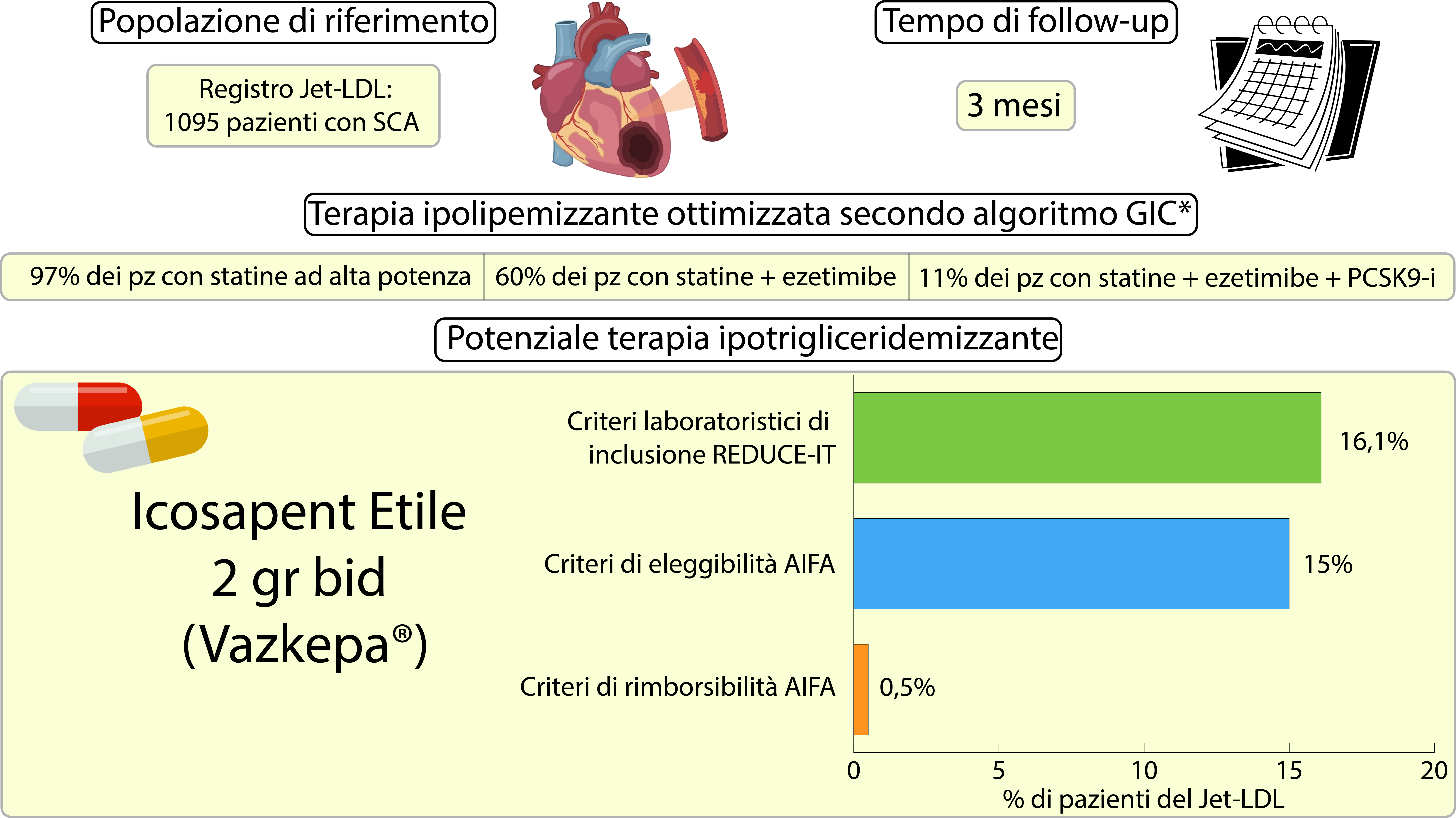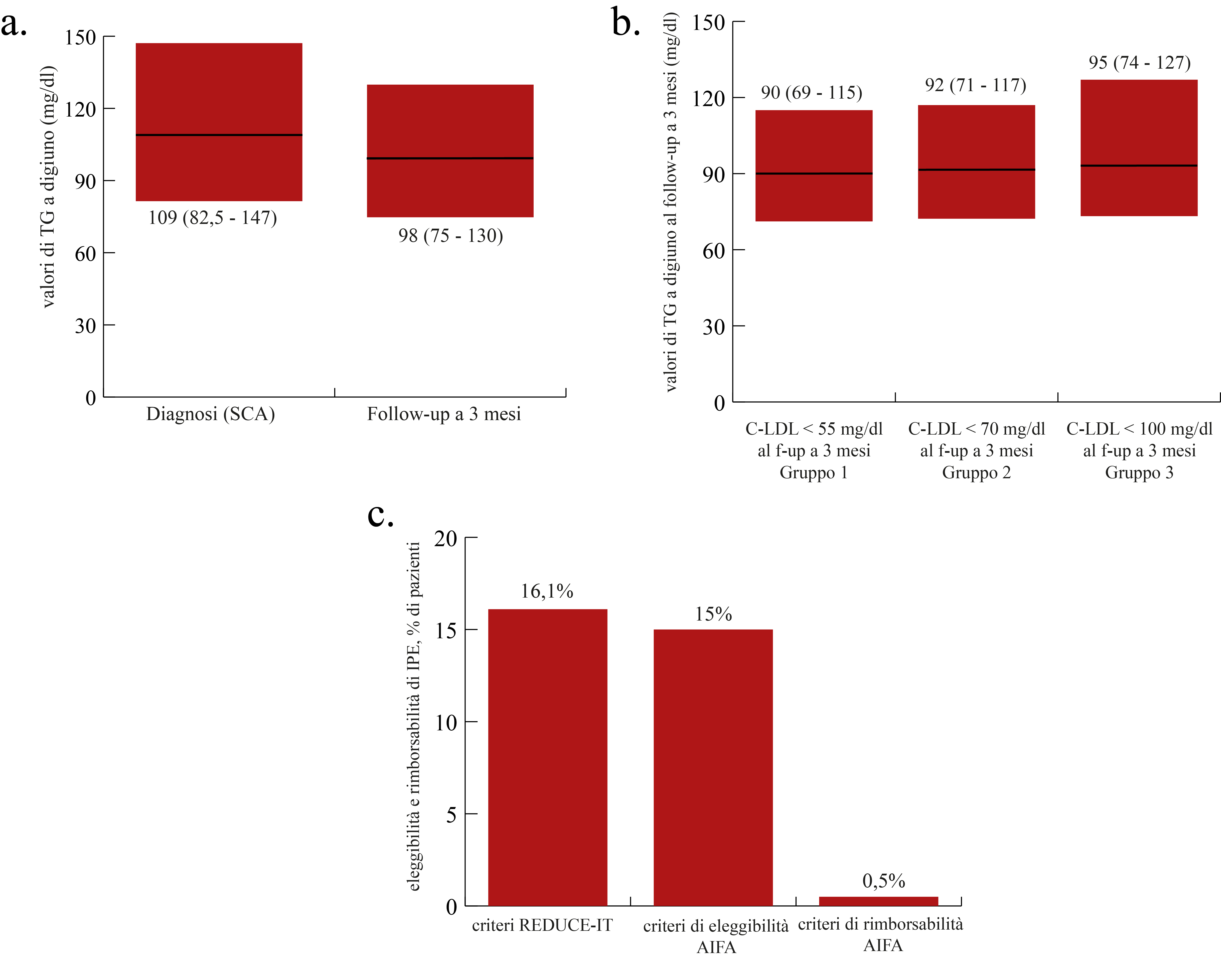Rational Hypertriglyceridemia is a common finding in patients with coronary artery disease (CAD), contributing to the residual cardiovascular risk in this population. In CAD patients with persistently elevated triglycerides levels despite lipid lowering therapies, a treatment with icosapent ethyl (IPE), compared to placebo, significantly lowered the risk of ischemic events. We aimed to quantify the burden of real-world patients with high triglycerides levels despite optimal lipid lowering therapies, and to provide the potential use of IPE as therapeutic strategy of secondary prevention. Materials and methods We used the data of the multicenter and observational JET-LDL registry, that included 1095 patients with acute coronary syndrome undergoing percutaneous coronary intervention with at least one stent implantation at 35 Italian hospitals. In the present sub-analysis, we investigated fasting triglycerides levels at index hospitalization and after 3 months of follow-up, and their relation with low-density lipoprotein cholesterol (LDL-C) values. We also identified patients potentially eligible for IPE prescription based on triglycerides and LDL-C levels applied in REDUCE-IT trial. Results Baseline triglycerides levels and at 3 months follow-up were 109 (82,50 – 147) mg/dL and 98 (75 – 130) mg/dL, respectively. The reduction of triglycerides was also statistically significant (p < 0.01) comparing paired measurements in patients. At 3 months, 16,1% of patients met the inclusion laboratory criteria of the REDUCE-IT trial, making them eligible for IPE based on these parameters. Additionally, 15% of patients were eligible under Italian Medicines Agency’s (AIFA) authorized guidelines for the use of IPE, while only 0,5% qualified under AIFA’s criteria for reimbursement. Conclusions A non-negligible proportion of patients met the REDUCE-IT’s triglycerides cut-offs levels for IPE prescription at three months follow-up post-acute coronary syndromes. However, the prescription of IPE can be very limited by the restrictive reimbursement criteria.


